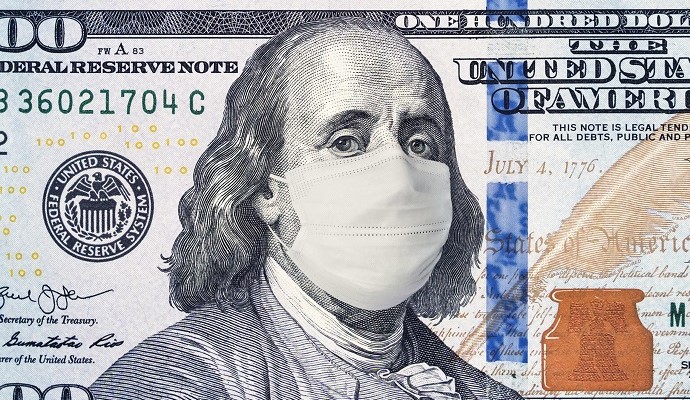Layoffs Continue as Primary Care Braces for Return to Pre-COVID Pay
Over a third of primary care practices have laid off or furloughed staff in the last 4 weeks as cash on hand continues to dwindle and leaders prepare for a return to normal telehealth payment policies.

Source: Getty Images
- Primary care practices are still furloughing and laying off staff to improve financial stability during the COVID-19 pandemic, according to a recent survey of clinicians.
For more coronavirus updates, visit our resource page, updated twice daily by Xtelligent Healthcare Media.
The survey conducted by The Larry A. Green Center, in collaboration with the Primary Care Collaborative (PCC) and 3rd Conversation, showed that 37 percent of clinicians reported new layoffs and furloughs in the last four weeks. Another 28 percent of clinicians said they have skipped or deferred salaries during that time.
The workforce challenges are occurring as two in five clinicians were unable to state that they have billable services or cash on hand to stay open through August.
“This is disaster recovery 101. As a nation, we needed to look at the gap analysis from day one, figure out where our weaknesses lie, and work to address them so we are not as vulnerable next time. However, we’ve failed to do that,” Rebecca Etz, PhD, co-director of The Larry A. Green Center, stated in a press release. “We already have had preventable patient morbidity and mortality. It’s shocking to see that half of practices say if things do not turn around it is likely they will not be here at end of year.”
READ MORE: How COVID-19 Imperiled Physician Practices, And How to Save Them
The survey was fielded June 26 through 29, 2020, and received 735 responses from clinicians in 49 states. The majority of respondents (64 percent) identified their practice as family medicine, which ranged from one practicing clinician to over ten. Settings included 22 percent rural, 12 percent community health centers, and 8 percent in schools/offices. Thirty-five percent were self-owned, 13 percent independent and large group, and 39 percent were owned by a health system.
Respondents to the ongoing series of surveys gauging the attitudes of primary care clinicians and patients during the COVID-19 pandemic revealed a sense of uncertainty as cases of the virus migrate and economic relief starts to expire.
Over a third of clinicians (35 percent) said they are not ready to address increased patient needs from the pandemic. Over 40 percent also said they are unprepared for a second pandemic wave.
Weakened finances, increases in both non-COVID morbidity and mortality, and mental stress all contributed to the uncertainty plaguing primary care practices at this time.
In the last four weeks, 61 percent of clinicians reported reducing in-person visits between 30 and 50 percent for a variety of reasons. Need to maintain physical distance in the office (55 percent), shifting of patients with stable chronic conditions to telehealth (64 percent), and patient choice (53 percent) being the most common reasons.
READ MORE: Nearly a Fifth of Primary Care Practices Are Temporarily Closed
A handful (28 percent) of clinicians, however, said patient contact is at an all-time high because of telehealth services turned on during shelter-in-place orders. But 16 percent reported claim denials for telehealth claims.
About 10 percent of clinicians also stated that their practices have reduced video-based care in the last four weeks and 24 percent have reduced phone-based care. Practices decided to reduce the services because of poor payment structures, the survey found.
Public and private payers have implemented a range of payment flexibilities during the pandemic to help providers pivot operations in response to COVID-19. Chief among those flexibilities was increased telehealth reimbursement and coverage.
However, the flexibilities were temporary and will expire as the public health emergency ends on July 25, 2020. HHS officials have suggested that the department will extend the public health emergency, but clinicians are still unsure how long they will receive higher telehealth reimbursement rates, which has left many practices unprepared for a potential second wave of COVID-19.
About two-thirds of clinicians responding to the survey said they are not prepared for a loss or reduction of telehealth payments and less than 10 percent were confident their practice could survive the pullback in reimbursement.
READ MORE: Advanced Primary Care Promotes Value-Based Care
Pent up demand for patient services that were delayed or deferred during the pandemic added to clinician stress, especially as the upcoming flu season approaches, the survey showed.
“While new federal, state and health plan virtual health policies have helped primary care, these turn out to be necessary, but not sufficient support,” Ann Greiner, president and CEO of PPC, stated in the press release. “These policies should absolutely not sunset. Plus, more financial support from the Provider Relief Fund is needed as is testing and PPE. You can draw a straight line between lack of primary care support and bad patient outcomes, particularly for patients of color.”
Primary care practices lost $15 billion during the first wave of the pandemic, according to new research from Harvard Medical School and American Board of Family Medicine. But losses could grow if the country implements another shelter-in-place order or if payers revert to lower telehealth reimbursement rates, researchers warned.
Specifically, going back to pre-COVID telehealth payment levels would result in losses of nearly $173,500 in gross revenue in 2020.
The researchers said their findings “ultimately highlight vulnerability of primary care practices to financial demise due to fee-for-service and visit-based payment policies, indicating that capitation-based payment reforms may be key to ensuring robustness of primary care into the future.”
